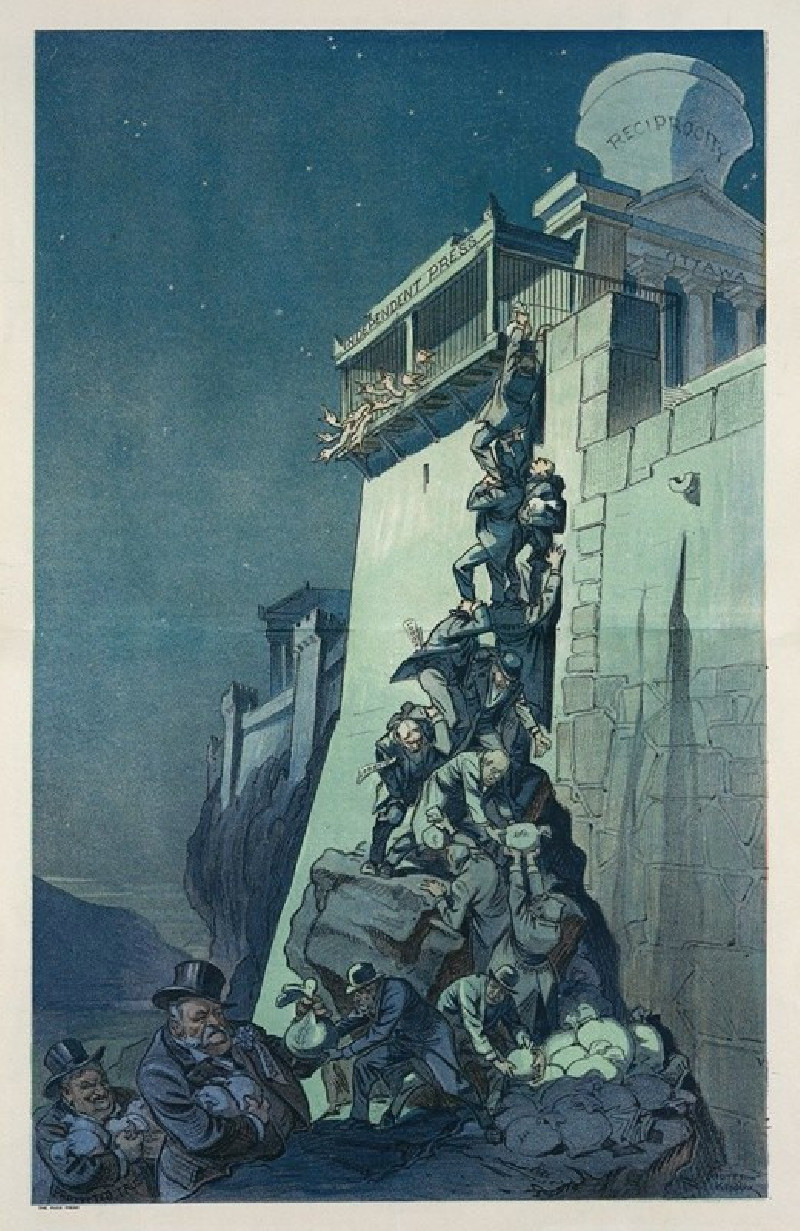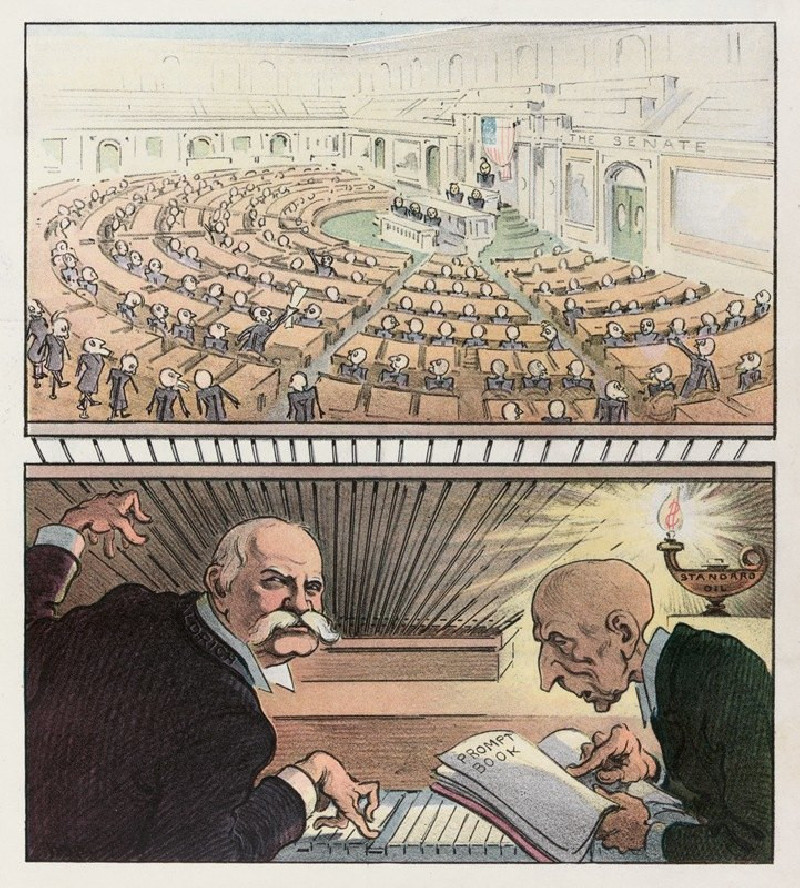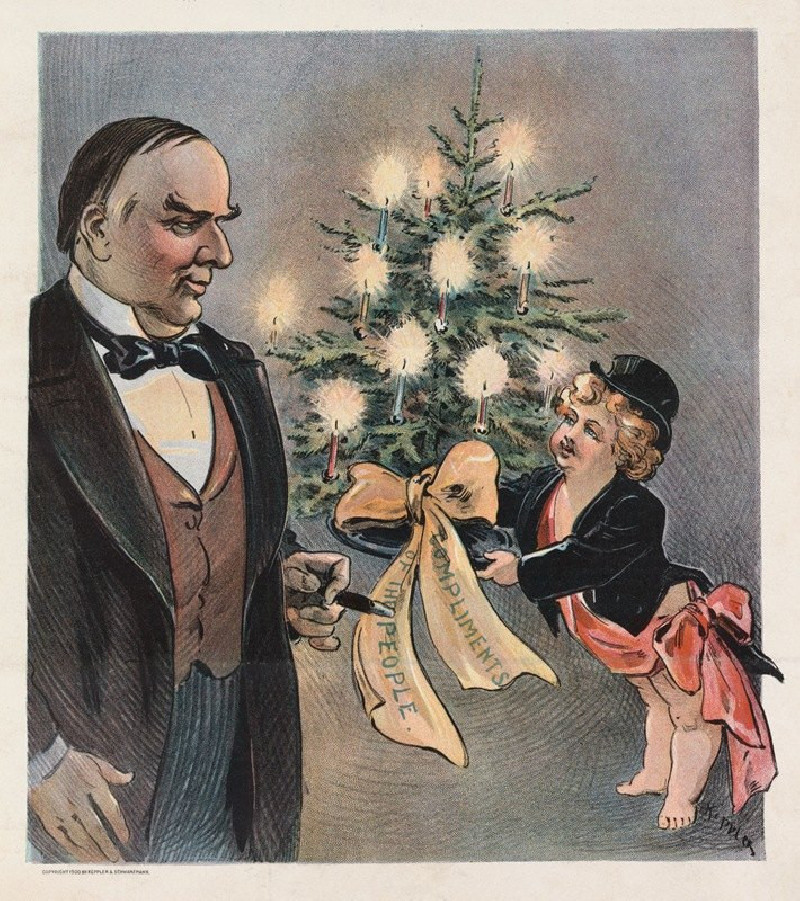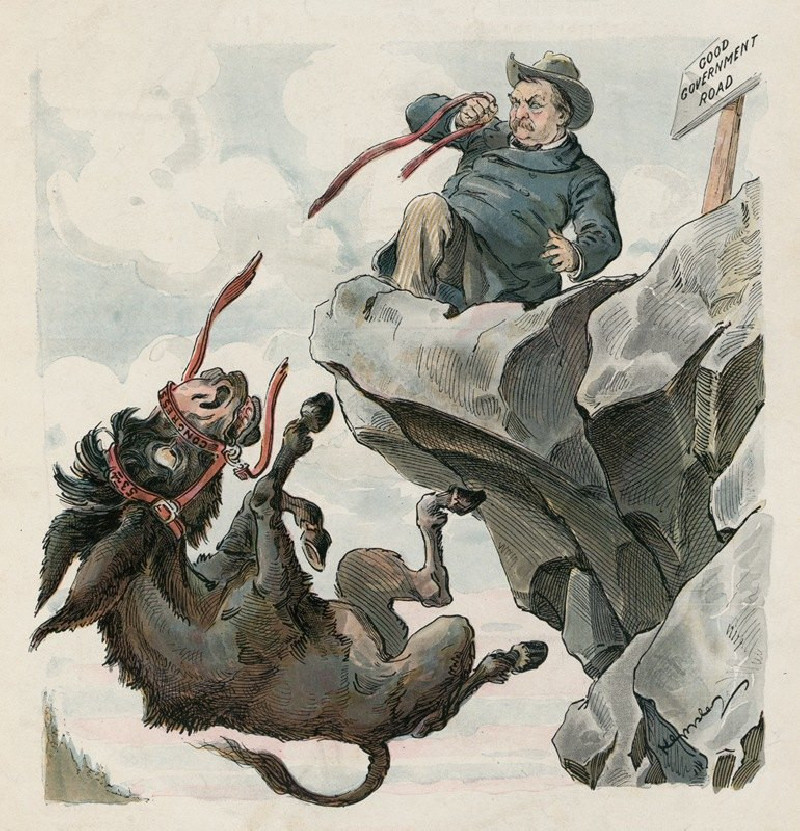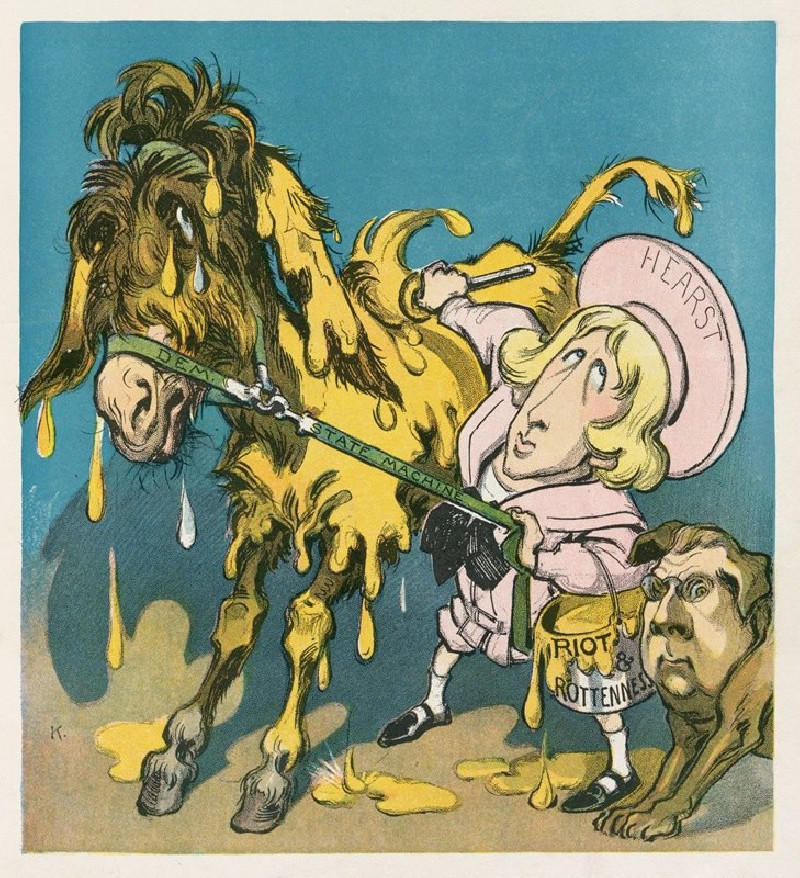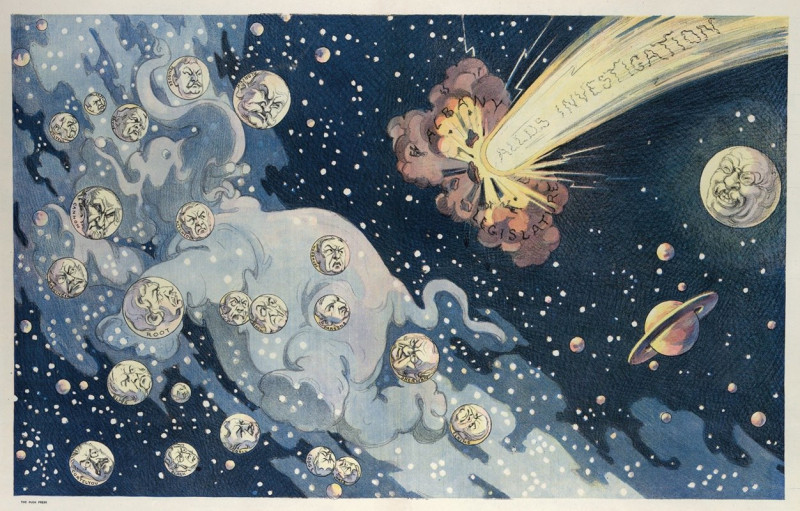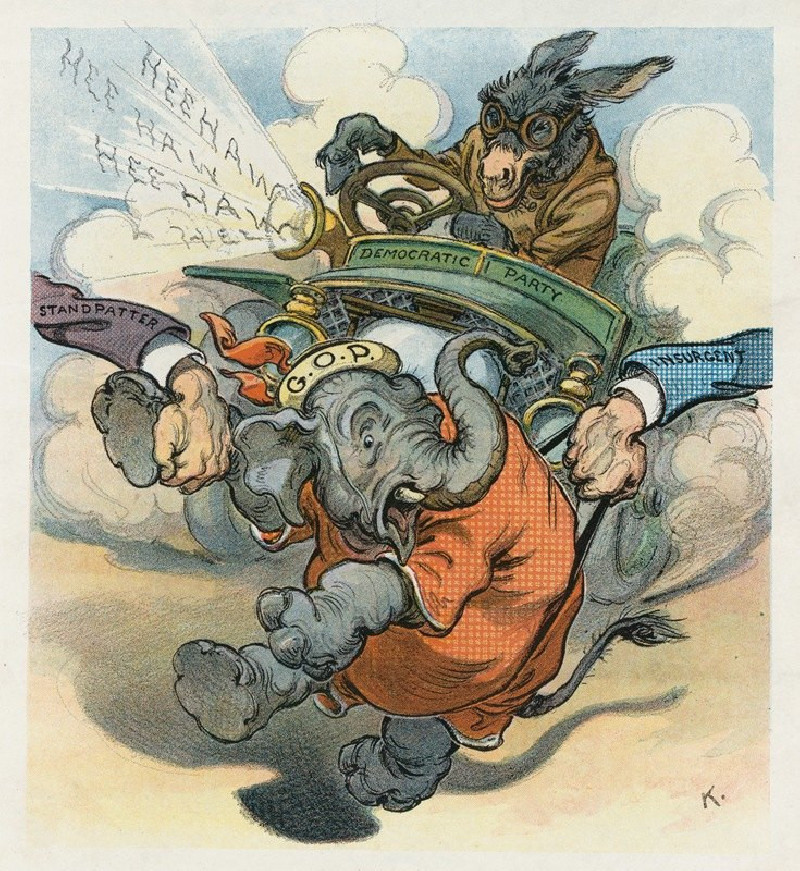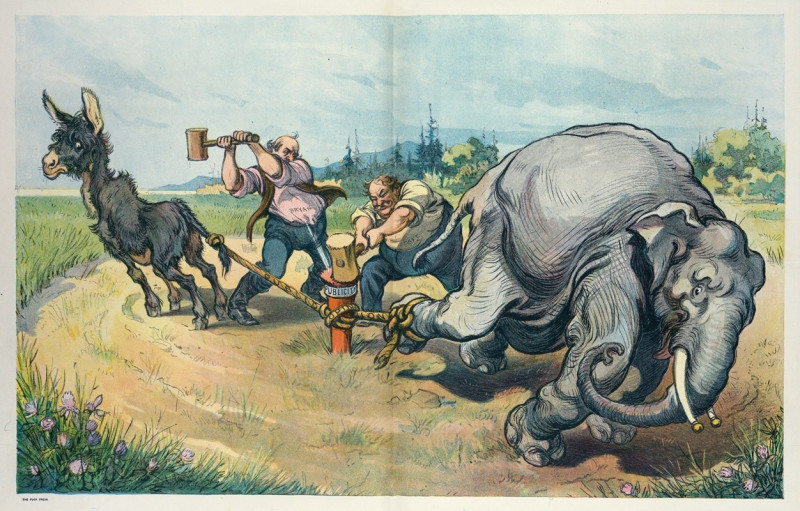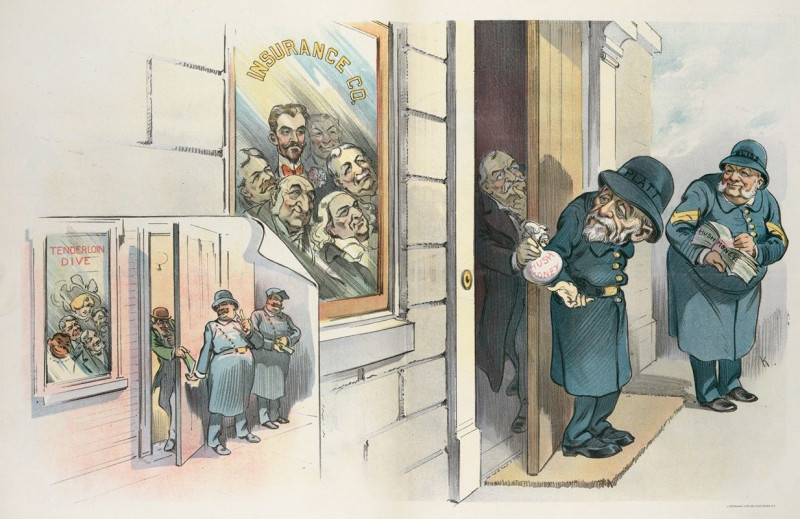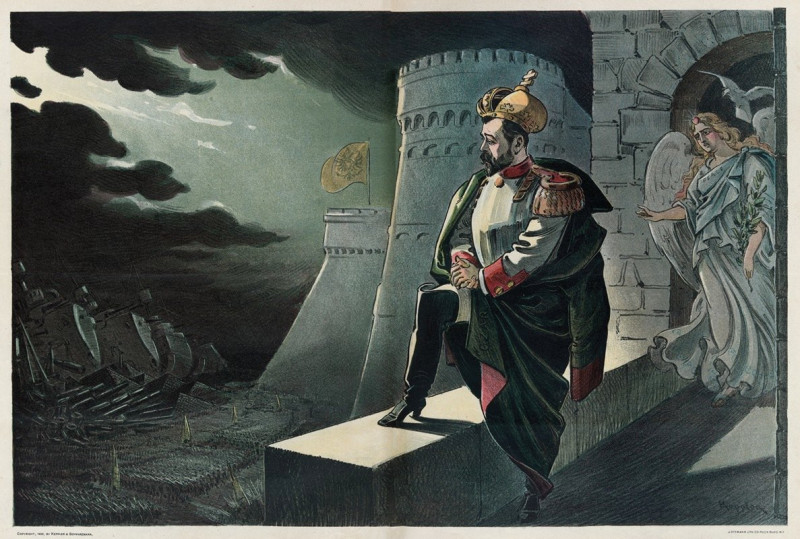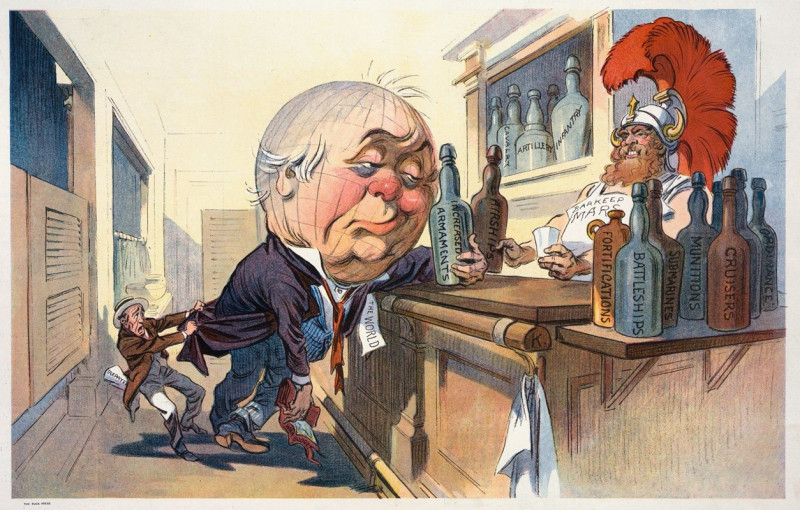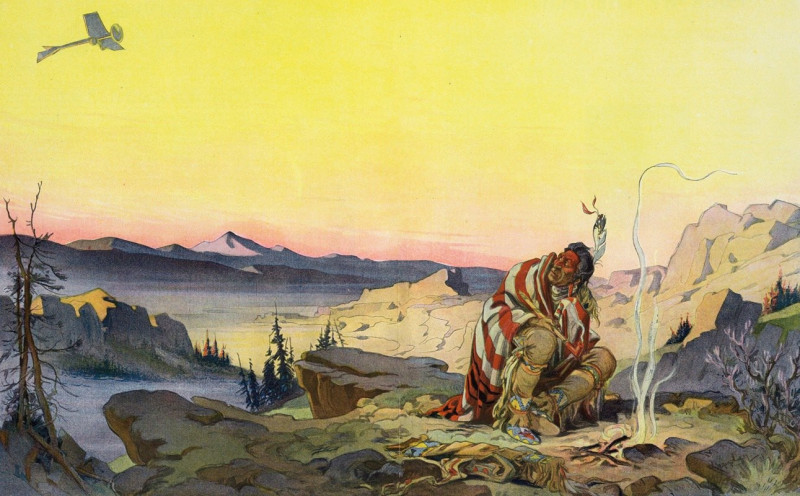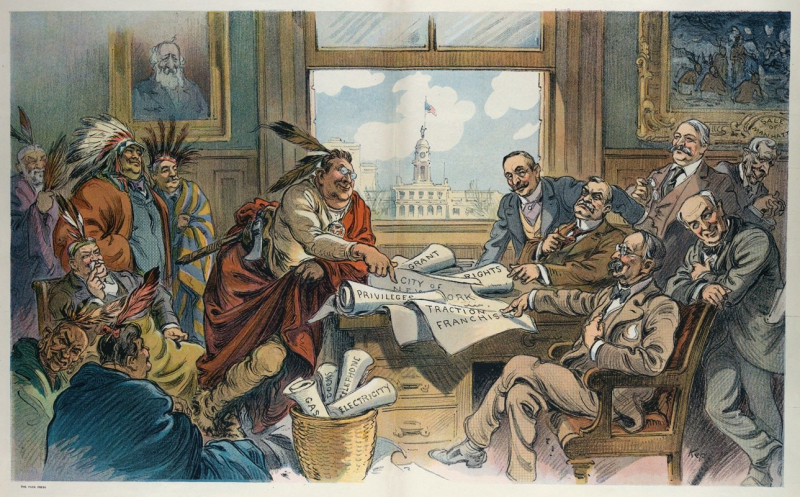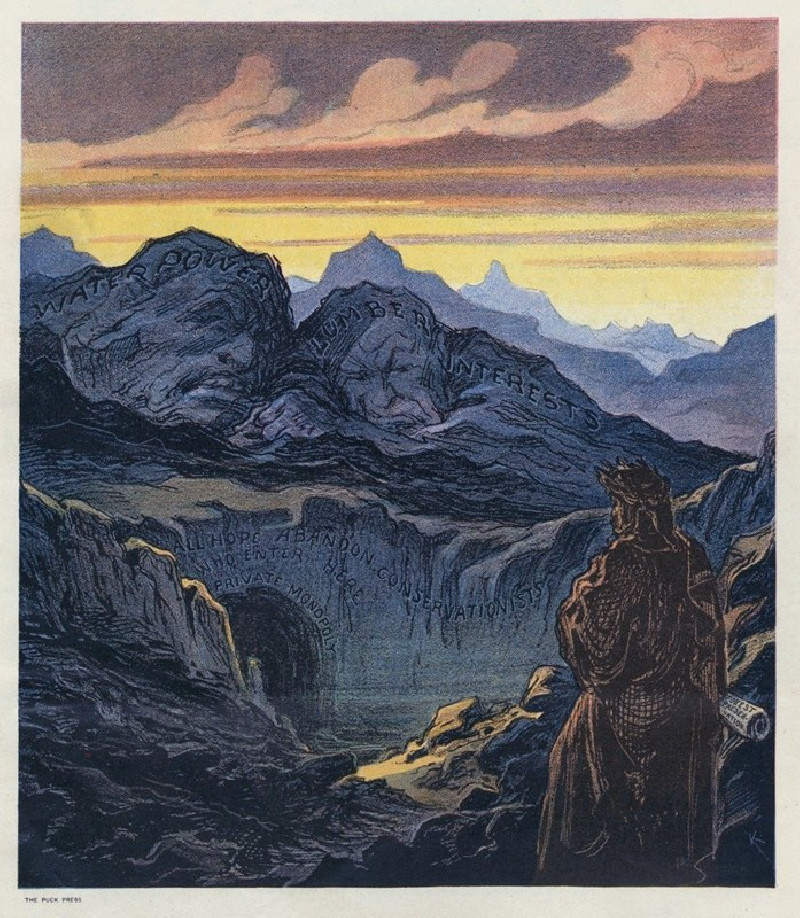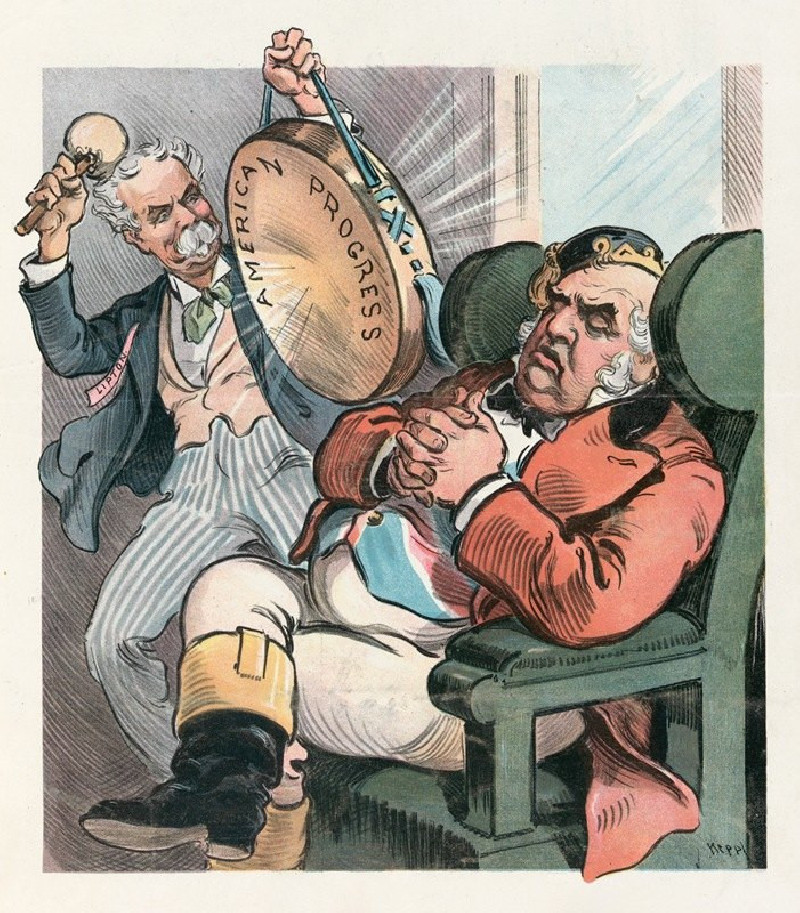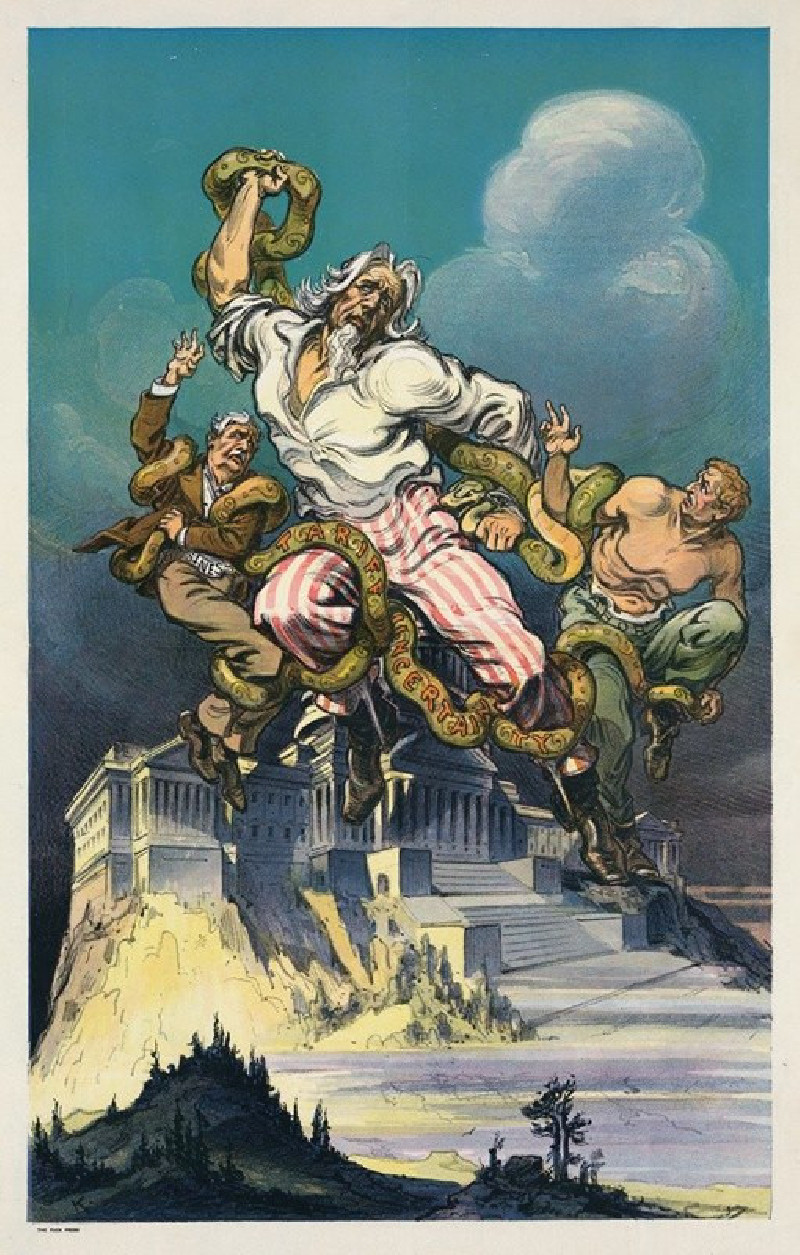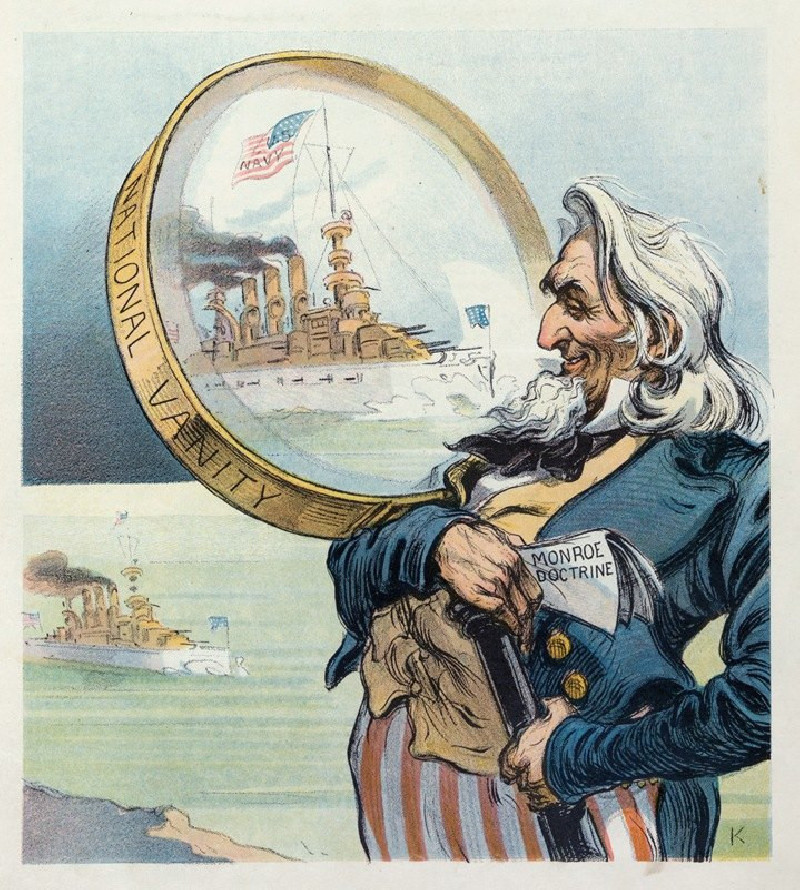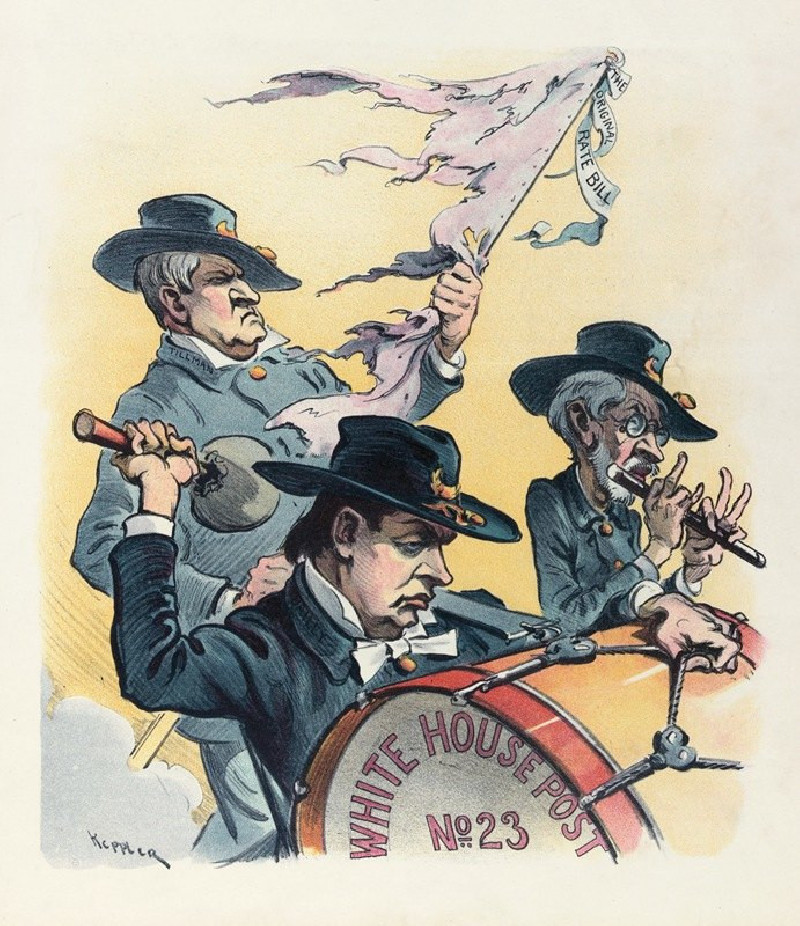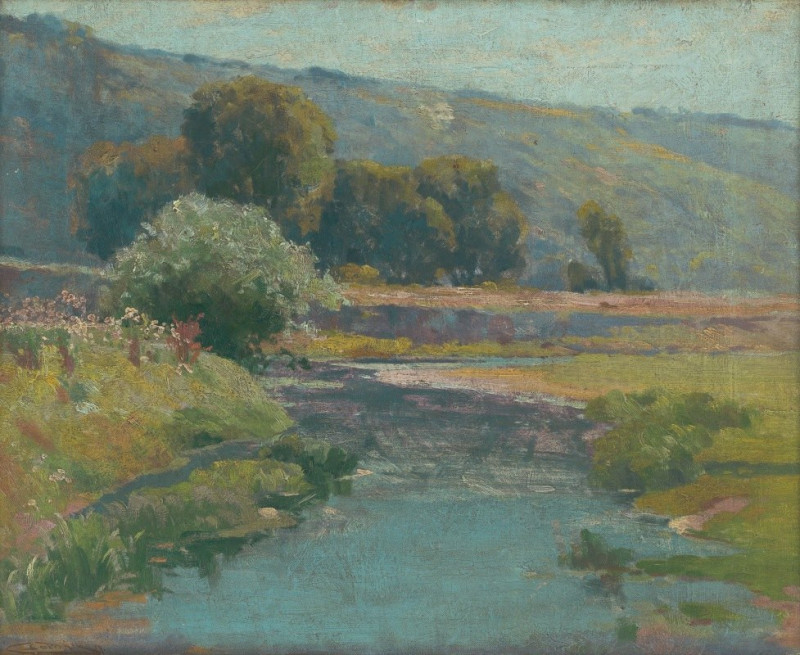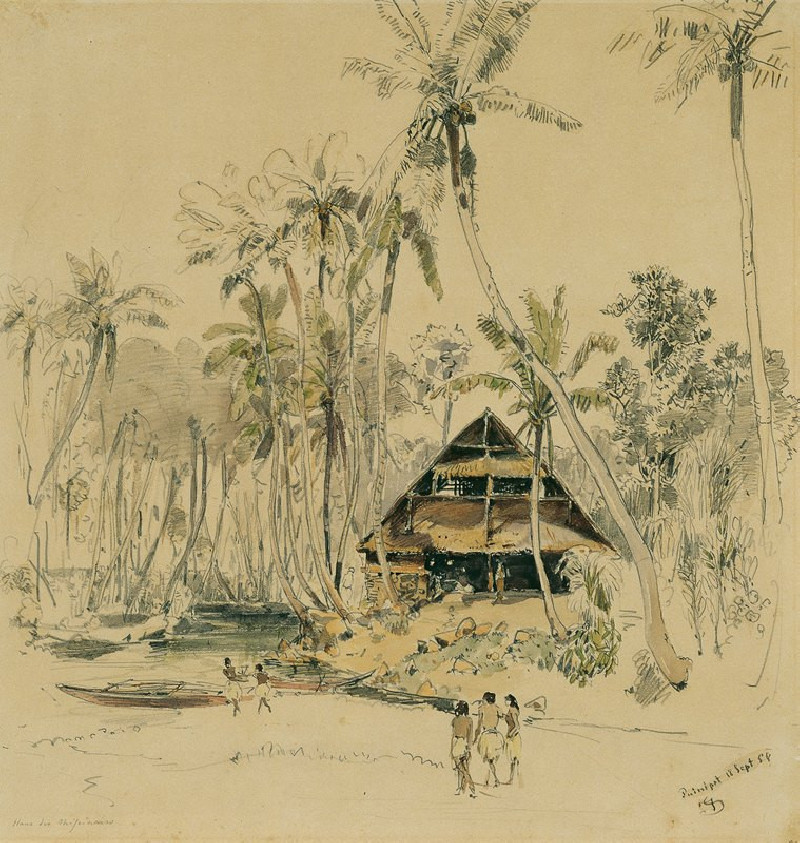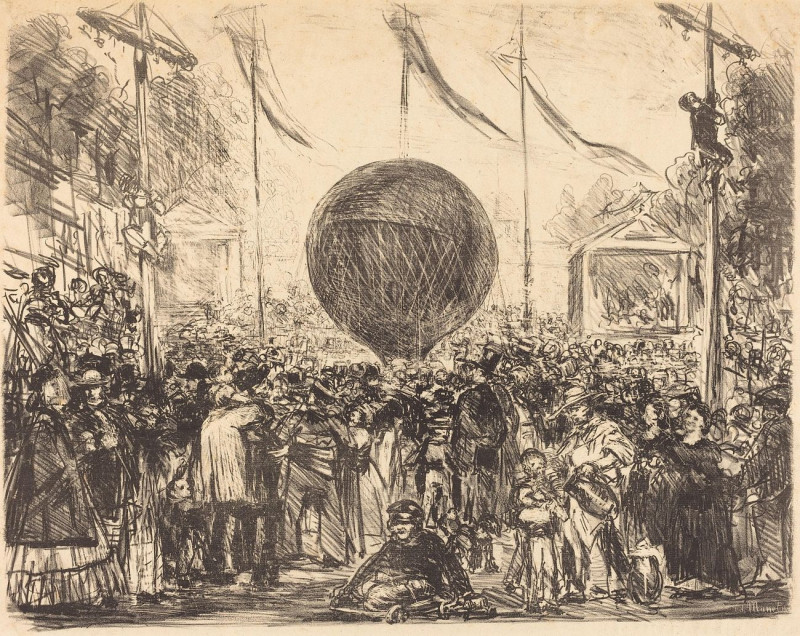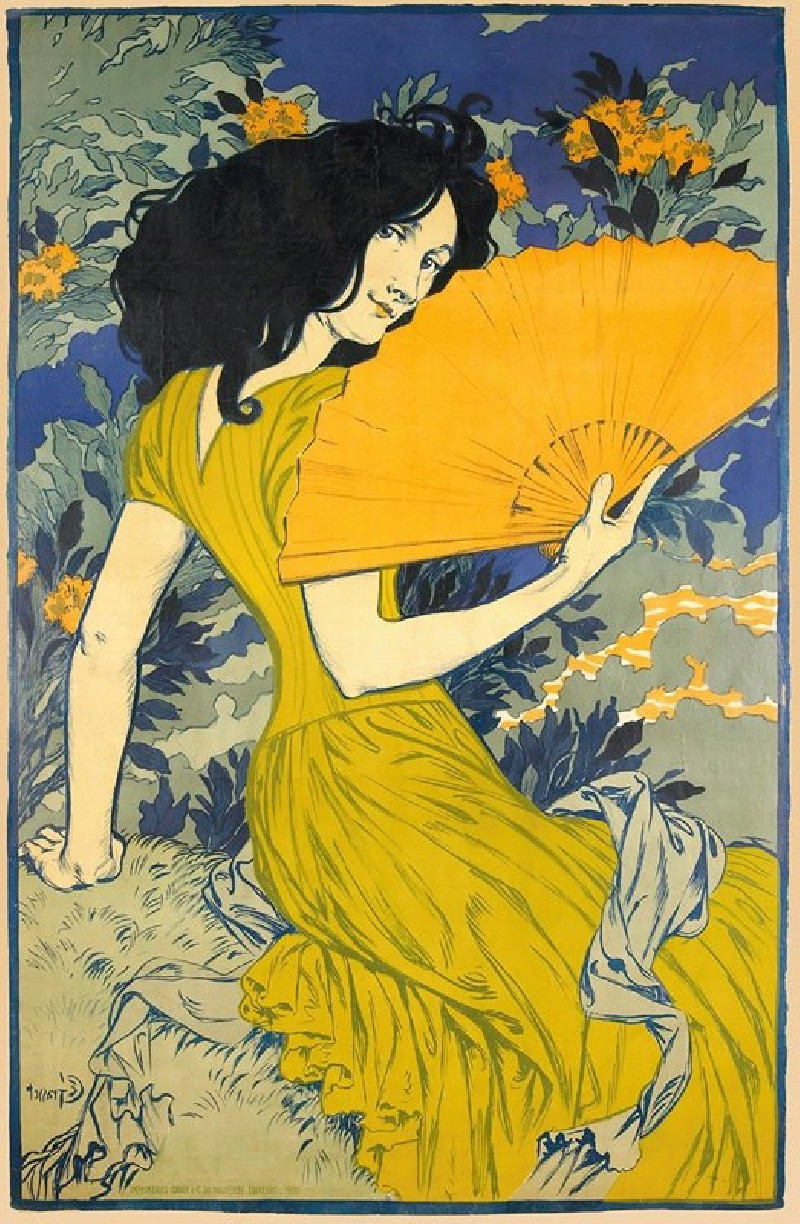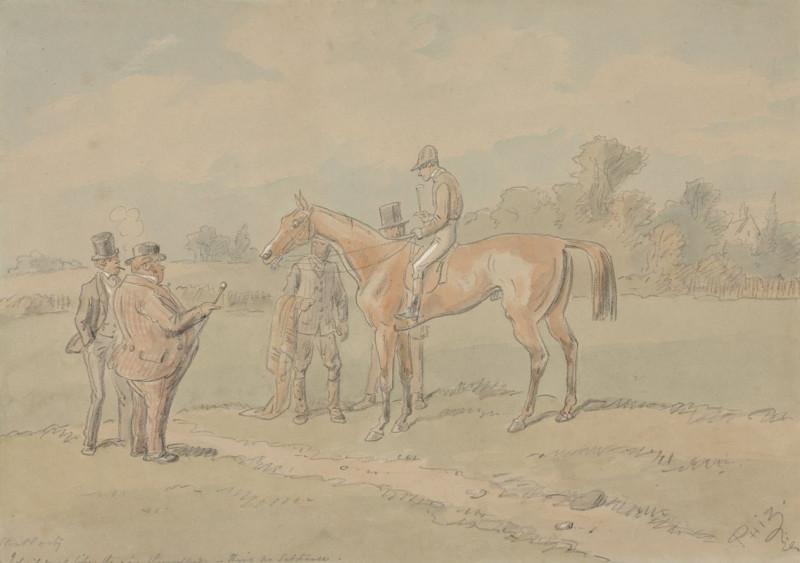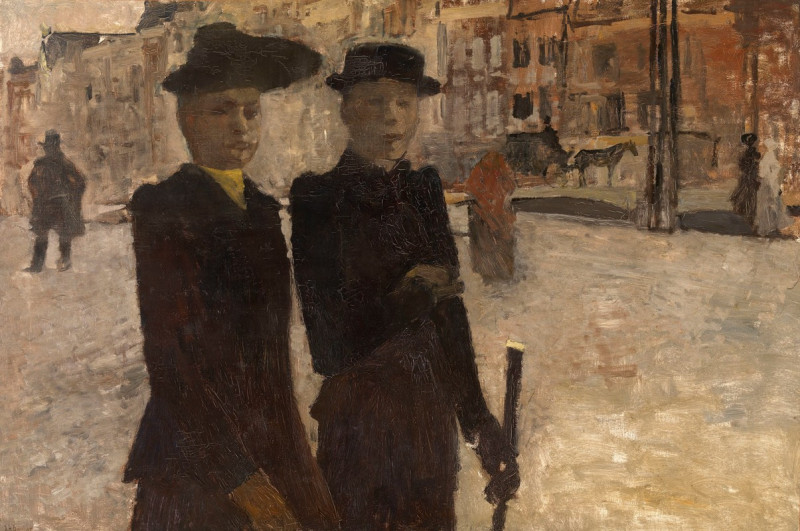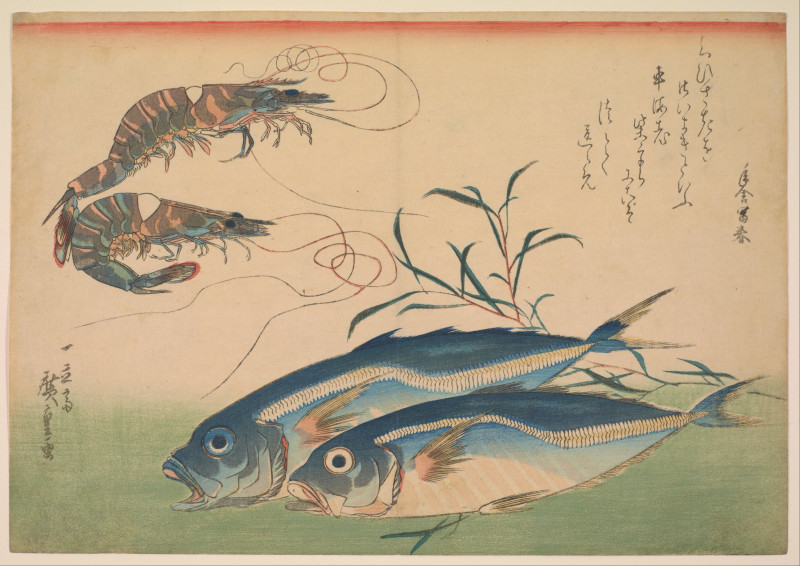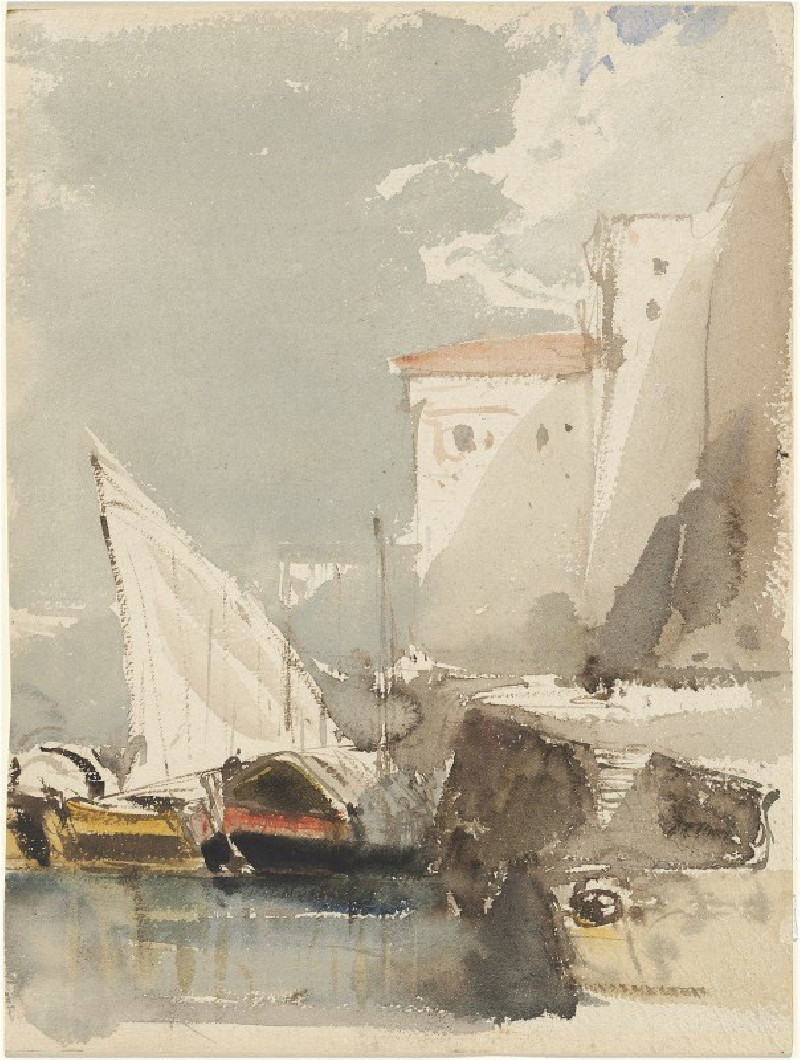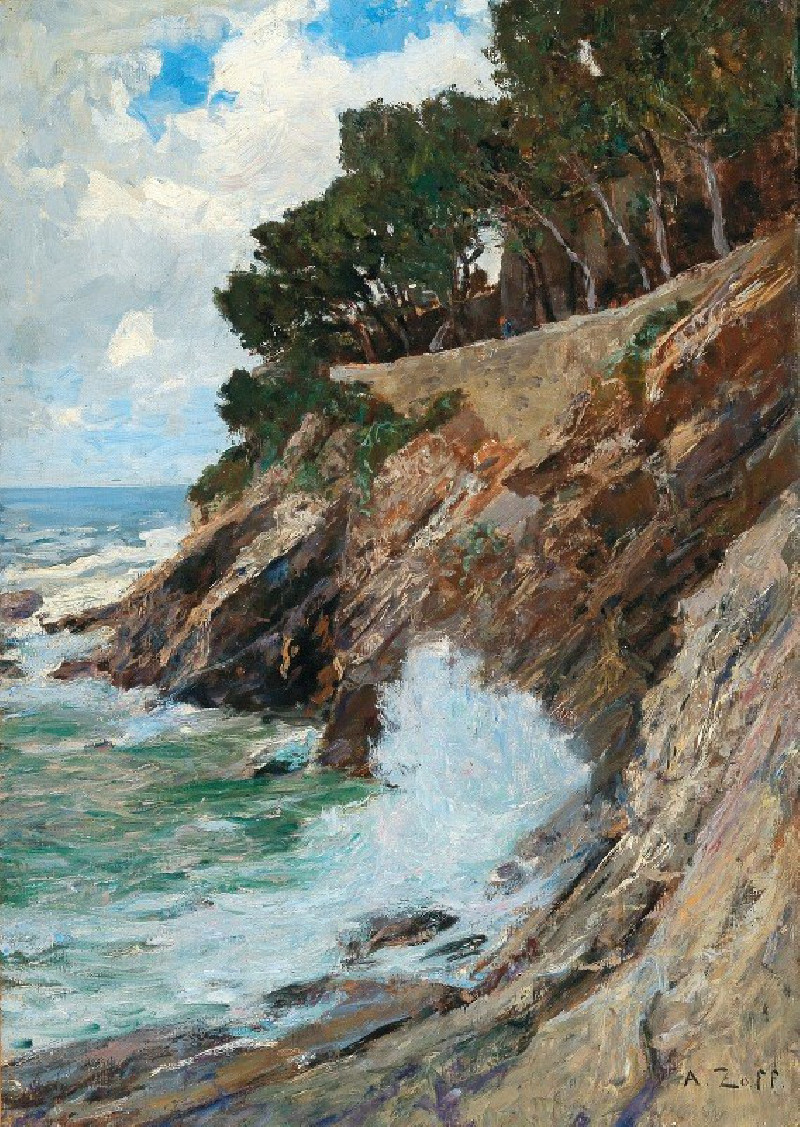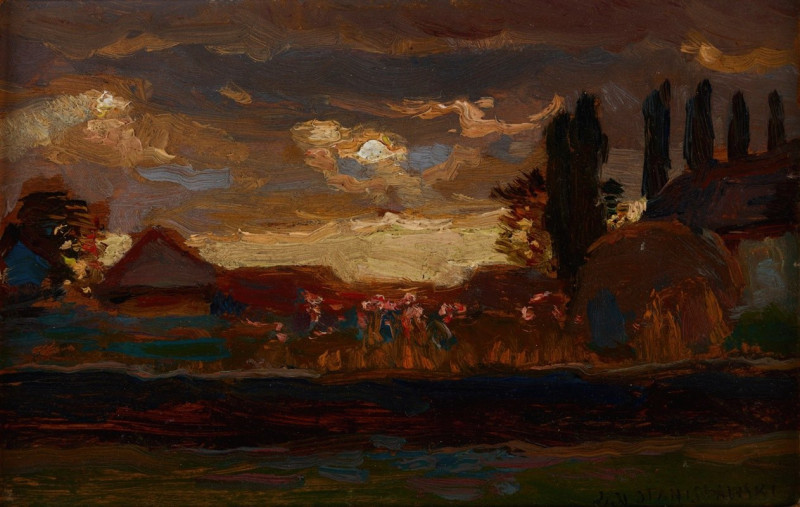A timely exposure (1901)
Technique: Giclée quality print
Recommended by our customers
More about this artwork
** "A Timely Exposure," a compelling political cartoon from 1901 by Udo Keppler, presents a thought-provoking and satirical view on the social issues of its time. This illustration captures a chaotic scene inside the "Anti-Canteen Saloon," depicted through a lantern’s circular light—the focal point through which the artist exposes the hypocrisy of anti-canteen laws.At the forefront of the image is a man, elegantly dressed with an unimpressed expression, holding up a lantern that casts light on the dramatic and tumultuous activities within the saloon. This character seems to represent reason or perhaps the law itself, shining a light on the true nature of these establishments.Inside the saloon, labeled as an “Anti-Canteen,” we witness a scene of disorder and violence contrary to what the name might imply. Patrons are involved in brawls; some are visibly drunk, staggering or lying on the floor, while others engage in more aggressive and disruptive behaviors. The bartender and other servers are depicted as active participants in the chaos, serving drinks and being part of the turmoil.Keppler’s artwork critiques the effectiveness and sincerity of laws meant to control soldiers' alcohol consumption by banning canteens on military bases, suggesting that such measures merely pushed the activities they intended to curb into less controlled environments, leading to even greater social issues.Through vivid imagery and stark contrasts, Keppler’s "A Timely Exposure" provides not only a snapshot of historical social challenges but also invites viewers to consider the unintended consequences of laws and regulations.
Delivery
Returns
Udo J. Keppler, since 1894. known as Joseph Keppler, Jr., was an American political cartoonist, publisher, and Native American advocate. The son of cartoonist Joseph Keppler (1838–1894), who founded Puck magazine, the younger Keppler also contributed to cartoons, and after his father's death became co-owner of the magazine under the name Joseph Keppler. He was also a collector of Native American artifacts.


